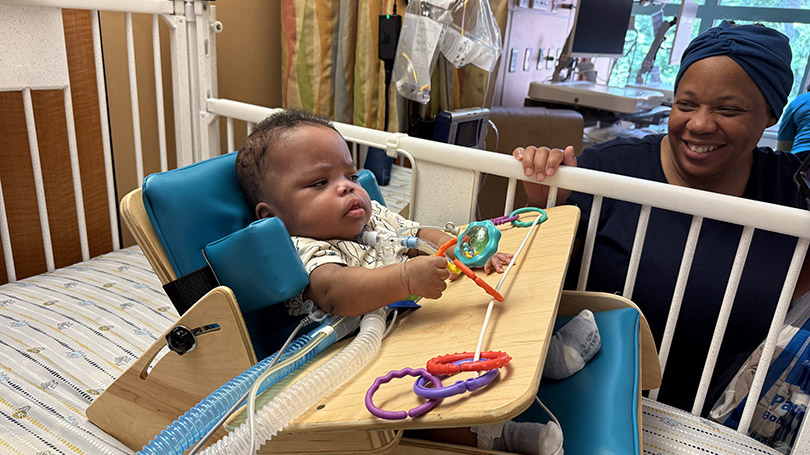News
HRO in Action: New Cribs Put Safety First

Over the Next Few Years, All of the Hospital’s Cribs Will be Accessible From All Sides, Which Can be Critical in an Emergency
July, 14, 2024
When Jacqueline Newton became MWPH's chief nursing officer and vice president of patient care services in January, she had a lot on her plate, but she also kept her eyes and ears open.
Within days, Newton noticed the hospital's fleet of cribs had only two side rails that could be adjusted rather than four. MWPH's team of neonatologists shared Newton's concern, noting that the medical team needed 360-degree access to patients at all times and especially during an emergency. The cribs prohibited this greater access as the head and foot siderails were stationary.
Newton quickly contacted MWPH President and CEO Dr. Scott Klein and Chief Financial Officer Mary Miller to get funding for the project. Both Klein and Miller agreed to move fast on the project, seeing the upgrade as a vital safety issue.
By the end of June, MWPH had purchased 12 new cribs - 10 for the West Rogers campus and two for the Capital Region campus. Newton said a dozen more are set to be ordered and delivered in the coming months.
"The four-sided cribs allow us to have full access to the patient. Particularly during an emergency, this full access allows the team to respond effectively to manage the airway, do compressions, start IVs, give medications, and it places the physician at the foot of the bed as the team leader during a resuscitation," Newton said. "I saw this as a great opportunity to impact our culture of safety."
Newton’s approach shows the hospital’s commitment to being a High-Reliability Organization (HRO). Newton said she used several HRO principles when embarking on the crib upgrade project.

- Deference to Expertise: When Newton arrived, she made sure to speak with as many frontline staff members as possible. Both MWPH’s neonatologists and the Pakula’s Unit’s nurses advocated for new cribs. “We want to make sure that the frontline staff have exactly what they need to do their best work,” she said.
- Sensitivity to Operations: The old cribs functioned for years without a major incident. But Newton was concerned that wouldn’t always be the case. She took a step back and sought to improve patient care by recognizing and addressing the potential risk the old cribs posed.
- Preoccupation with Failure: Reflecting on a recent code event during her first few weeks at the hospital, Newton used that opportunity to gain momentum on the project.
Neonatologist Dr. Stephanie de Wit said the new cribs were widely welcomed because when the physician is resuscitating a patient, the first priority is the patient's airway. That work is done most efficiently at the head of the crib, she said.
Previously, the team had to move the patient into the proper position; now, they lower the side rail at the head of the bed, de Wit said.
"Obviously, we want what's best for our patients, and sometimes, something as simple as the crib or the piece of equipment can make a difference in terms of life-or-death situations and also patient comfort," Dr. de Wit said. "I think for families, too, it's nice to be able to access the baby in different ways."
With a total of about 40 cribs between MWPH's two locations, Newton said it will take about three years to fully upgrade the fleet. In the meantime, Newton said children with the most complex needs and highest risk factors will be placed in the new cribs.
Registered Nurse Brooke Chapin, who works on the Pakula Unit, is a big fan of the more-accessible cribs.
"Time-wise, the faster you can get to somebody in an emergency, the better it is in the long term," she said. "I feel safer now because I know that in the past, that's been a problem."
